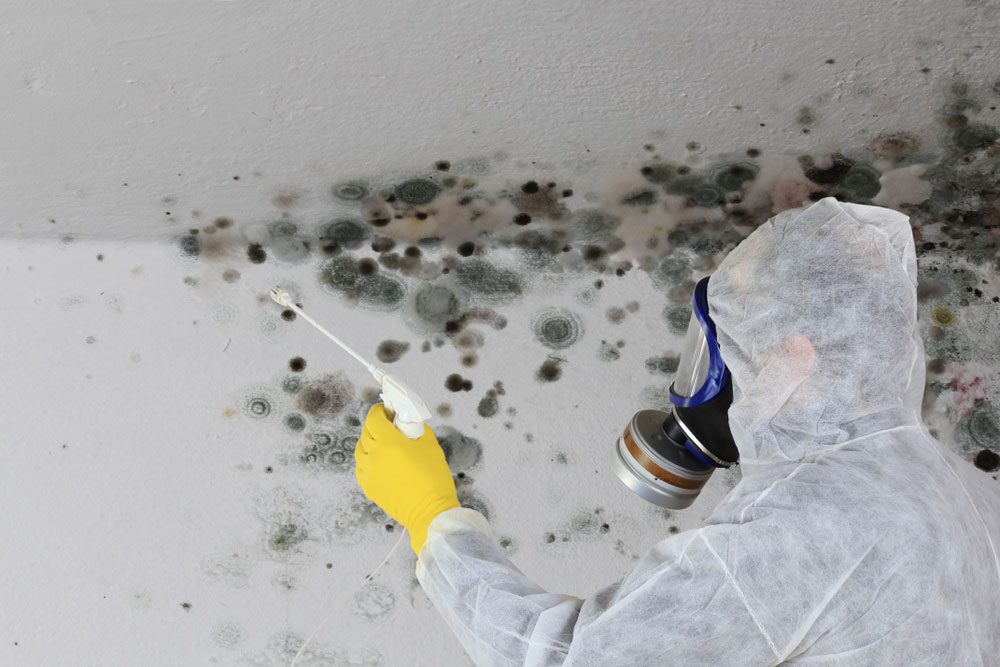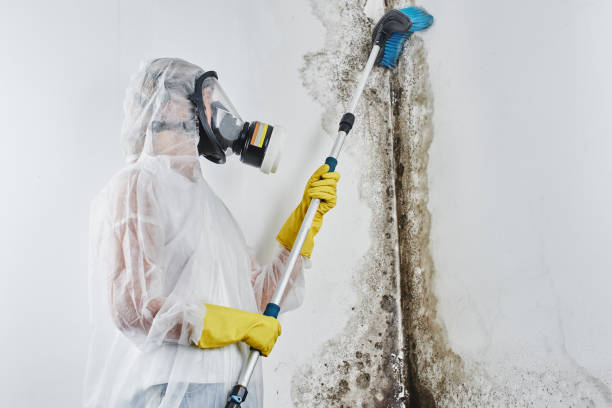Effective Mold And Mildew Remediation Methods to Get Rid Of Mold And Mildew Contamination in Your Residential Or Commercial Property
Mold and mildew contamination is a common issue that property proprietors deal with, usually leading to health and wellness worries and property damage if not addressed without delay and efficiently. By recognizing the essential methods for getting rid of mold, home proprietors can take proactive steps to ensure a healthy and balanced and safe living atmosphere.
Recognizing Mold And Mildew Sources

One primary approach for determining mold and mildew resources is carrying out a visual analysis. This involves thoroughly evaluating all areas of the home, including hidden spaces like behind wall surfaces and under flooring. Moisture meters and thermal imaging cameras can likewise be used to find hidden water leaks or moisture pockets that could be advertising mold growth.
Additionally, air sampling can help pinpoint mold resources by detecting elevated mold spore levels airborne. By attending to the root and recognizing reason of mold and mildew development, removal efforts can be a lot more targeted and ultimately more successful in eliminating the mold contamination.
Proper Air Flow Strategies
Reliable mold remediation not just counts on identifying mold sources yet additionally emphasizes the significance of carrying out correct air flow strategies to stop future mold growth (mold removal philadelphia). Correct air flow plays a vital duty in regulating indoor humidity degrees, which in turn assists to discourage mold spores from thriving in damp settings. By guaranteeing excellent air blood circulation throughout the residential property, excess moisture can be decreased, thus developing an environment less conducive to mold and mildew development
One efficient ventilation strategy is making use of exhaust fans in moisture-prone locations such as bathrooms, kitchen areas, and utility room. These fans aid to eliminate damp air and prevent it from gathering on surfaces. Additionally, opening windows and doors when weather condition allows can additionally help in enhancing air flow and decreasing dampness levels inside your home.
It is essential to deal with any kind of ventilation problems immediately to maintain a healthy indoor environment and stop mold contamination. Normal maintenance of air flow systems, such as cleansing filters and ducts, is vital to ensure optimal air movement and avoid the accumulation of wetness that might bring about mold and mildew development.
Reliable Cleansing and Disinfecting
Mold spores can spread quickly if not appropriately cleansed and decontaminated, leading to repeating mold and mildew development and possible health and wellness threats. When dealing with mold contamination, it is vital to begin by getting rid of any kind of noticeable mold growth making use of proper cleansing options and methods.
After the physical elimination of mold, decontaminating the affected areas is necessary to eliminate any type of remaining mold and mildew spores and prevent regrowth. Disinfectants such as bleach remedies or hydrogen peroxide can be used to disinfect the cleaned surfaces thoroughly. When making use of disinfectants to make sure performance and minimize wellness threats, it is vital to follow producer guidelines and security standards. Regular cleansing and decontaminating techniques can help preserve a mold-free atmosphere and secure the wellness of owners in the building.
Encapsulation and Sealing

Encapsulation and securing are important strategies in mold removal tasks to stop the recurrence of mold and mildew growth. By enveloping the mold, it successfully seals off the mold-infested surfaces, hindering additional growth and minimizing the risk of exposure to hazardous mold bits.
Sealing, on the various other hand, focuses on attending to locations prone to moisture invasion or where mold and mildew has formerly developed. By sealing cracks, crevices, and gaps in wall surfaces, floorings, or ceilings, the entry factors for moisture and mold spores are decreased, creating an atmosphere less helpful to mold development. This approach not just protects against the spread of mold but likewise assists in controlling moisture levels within the property, further dissuading mold development. When encapsulation and securing are performed effectively as component of a thorough mold and mildew removal strategy, they substantially add to making sure a mold-free and healthy indoor setting.
Tracking and Prevention
In preserving a mold-free environment post-encapsulation and securing, extensive surveillance and prevention strategies their website play a critical function in making sure long-term performance. Regular evaluations are important to spot any type of indicators of mold renewal or new development quickly. These assessments must include not just formerly affected locations yet additionally other vulnerable areas susceptible to moisture accumulation.
Maintaining indoor humidity below 60% can considerably impede mold growth. Correct ventilation, including the usage of exhaust fans in washrooms and kitchens, is also critical in decreasing wetness and preventing mold growth.
Furthermore, enlightening occupants on mold prevention methods, such as immediately taking care of leaks, enhancing air circulation, and attending to condensation issues, browse around here is important. Urging cleanliness and timely removal of any water-damaged materials can better hinder mold and mildew infestations. By executing a detailed monitoring and avoidance strategy, residential property owners can effectively secure their rooms versus mold contamination.
Conclusion
To conclude, effective mold remediation methods are essential in getting rid of mold and mildew contamination in homes. By recognizing mold and mildew resources, applying proper air flow methods, making use of reliable cleaning and decontaminating methods, enveloping and sealing influenced areas, and continuously tracking and avoiding future mold growth, residential or commercial property owners can efficiently remove mold concerns. It is necessary to attend to mold contamination without delay to preserve a healthy interior atmosphere and avoid additional damage.
Reliable mold remediation not only counts on recognizing mold resources however also highlights the relevance of implementing appropriate ventilation techniques to protect against future mold development. When tackling mold and mildew contamination, it is crucial to begin by eliminating any noticeable mold and mildew development utilizing ideal cleaning remedies and techniques.Encapsulation and securing are vital strategies in her response mold remediation jobs to stop the recurrence of mold and mildew growth. By securing off cracks, crevices, and spaces in wall surfaces, floors, or ceilings, the entry points for dampness and mold spores are minimized, creating a setting much less favorable to mold and mildew growth. By determining mold resources, implementing proper air flow strategies, making use of effective cleansing and decontaminating methods, securing and enveloping affected locations, and continually surveillance and stopping future mold and mildew growth, building proprietors can efficiently eliminate mold issues.